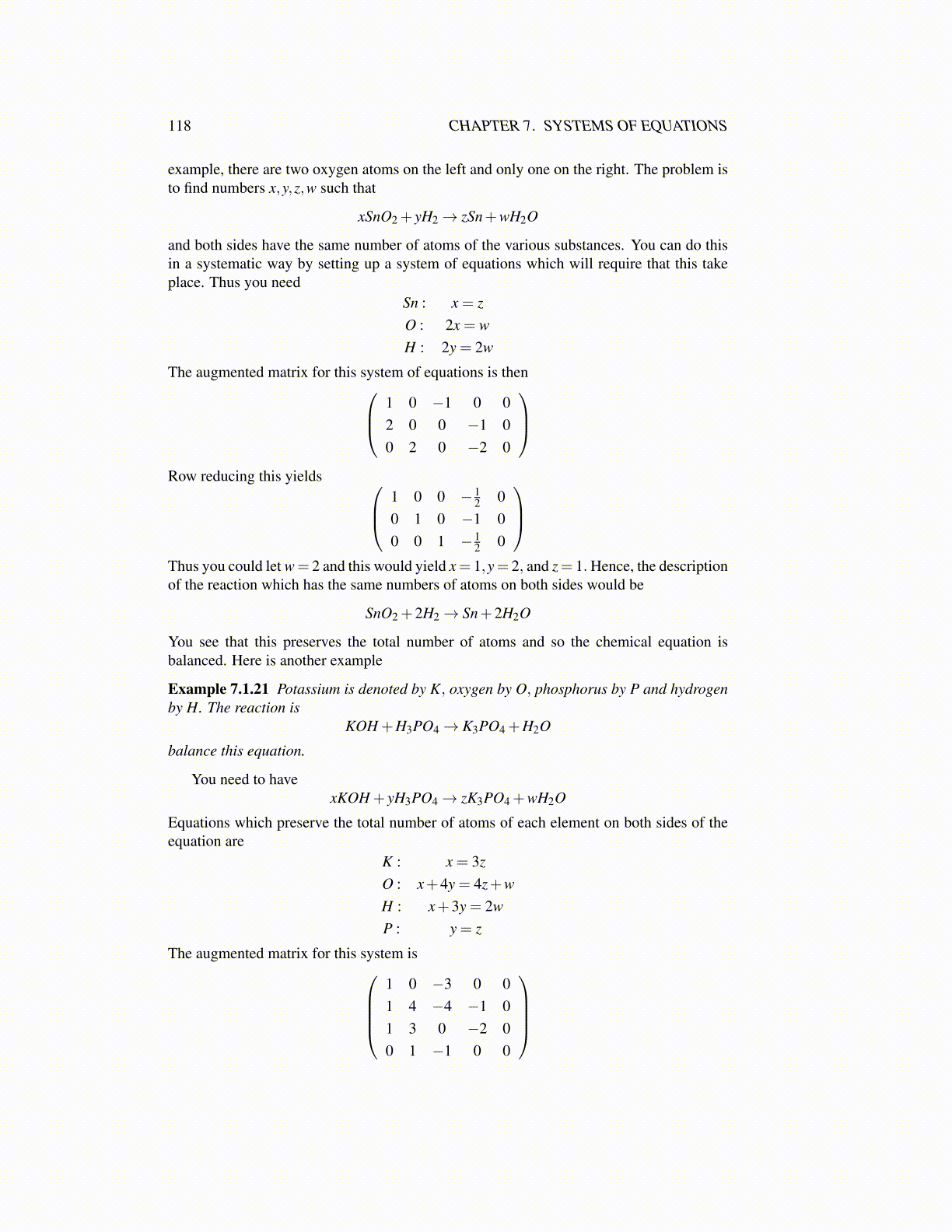
118 CHAPTER 7. SYSTEMS OF EQUATIONS
example, there are two oxygen atoms on the left and only one on the right. The problem isto find numbers x,y,z,w such that
xSnO2 + yH2→ zSn+wH2O
and both sides have the same number of atoms of the various substances. You can do thisin a systematic way by setting up a system of equations which will require that this takeplace. Thus you need
Sn : x = zO : 2x = wH : 2y = 2w
The augmented matrix for this system of equations is then 1 0 −1 0 02 0 0 −1 00 2 0 −2 0
Row reducing this yields 1 0 0 − 1
2 00 1 0 −1 00 0 1 − 1
2 0
Thus you could let w= 2 and this would yield x= 1,y= 2, and z= 1. Hence, the descriptionof the reaction which has the same numbers of atoms on both sides would be
SnO2 +2H2→ Sn+2H2O
You see that this preserves the total number of atoms and so the chemical equation isbalanced. Here is another example
Example 7.1.21 Potassium is denoted by K, oxygen by O, phosphorus by P and hydrogenby H. The reaction is
KOH +H3PO4→ K3PO4 +H2O
balance this equation.
You need to havexKOH + yH3PO4→ zK3PO4 +wH2O
Equations which preserve the total number of atoms of each element on both sides of theequation are
K : x = 3zO : x+4y = 4z+wH : x+3y = 2wP : y = z
The augmented matrix for this system is1 0 −3 0 01 4 −4 −1 01 3 0 −2 00 1 −1 0 0